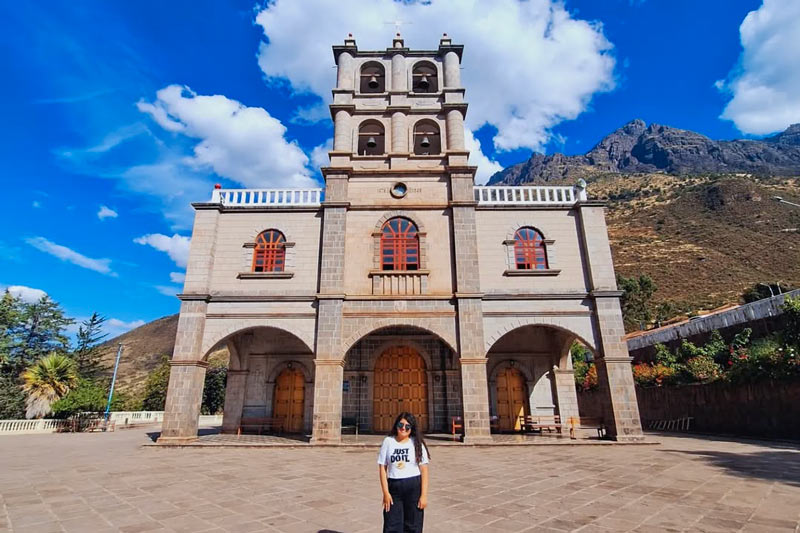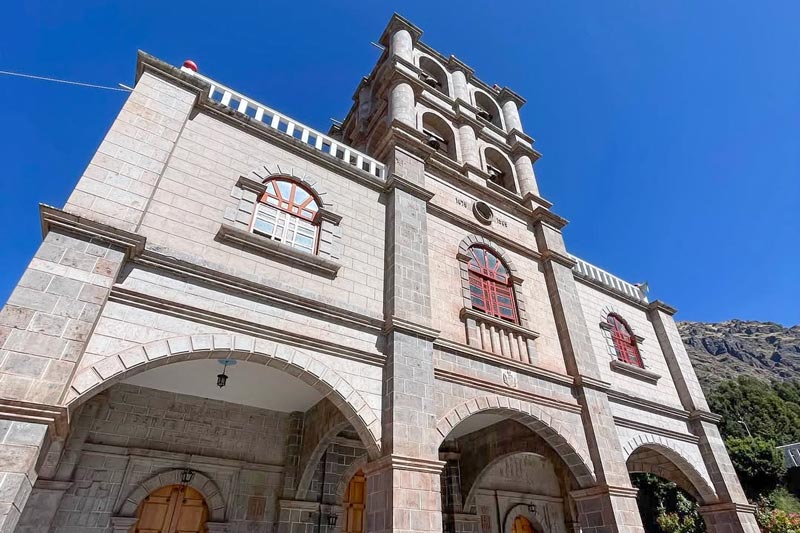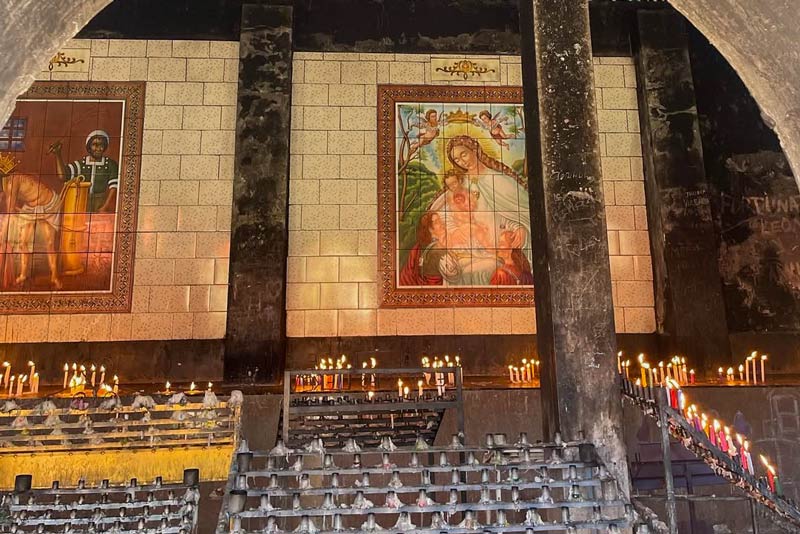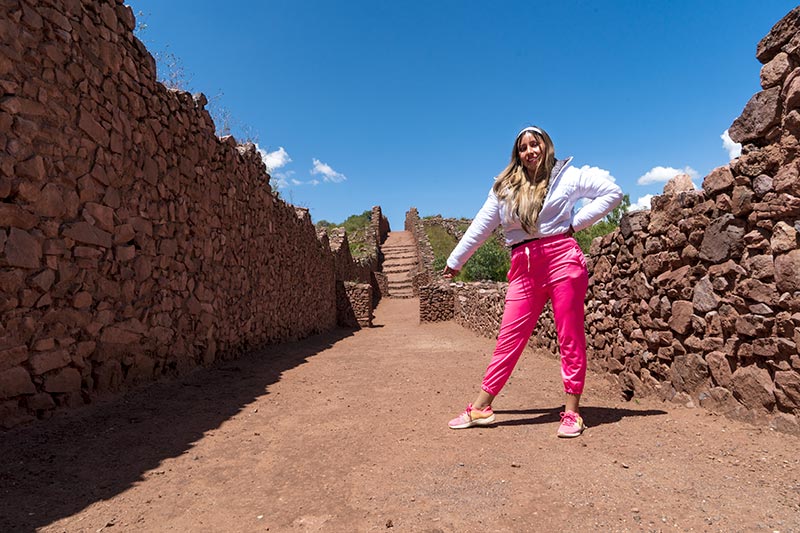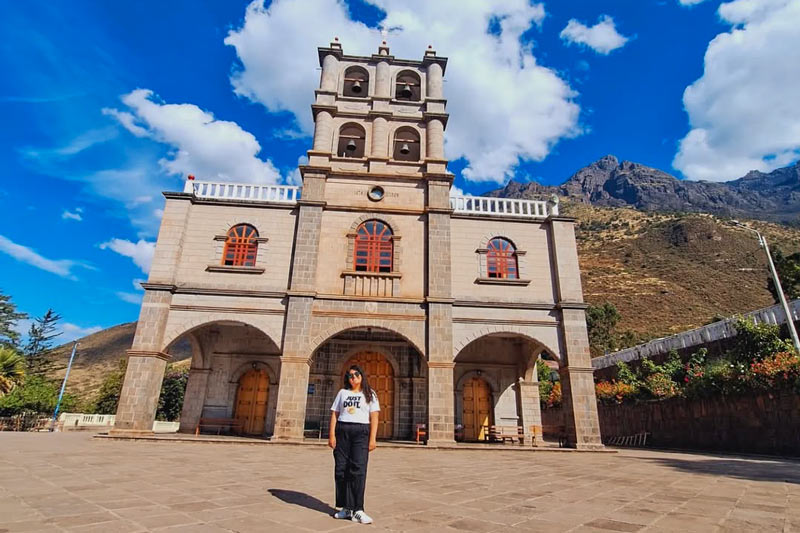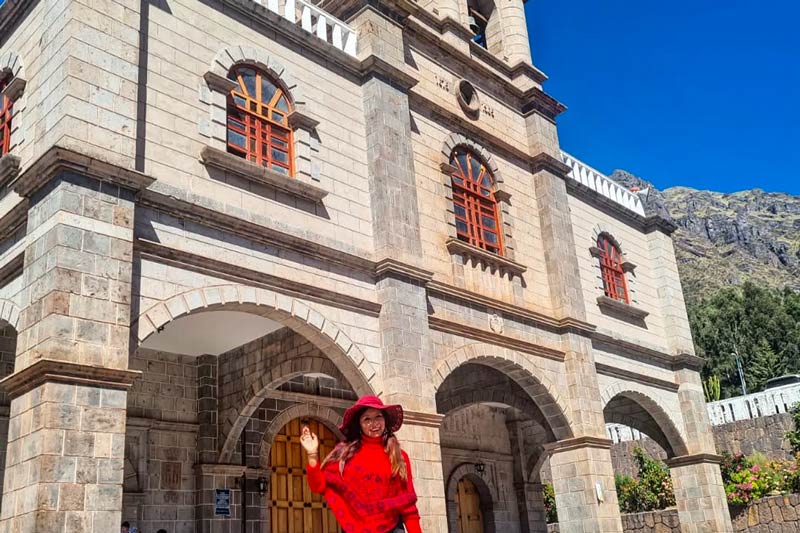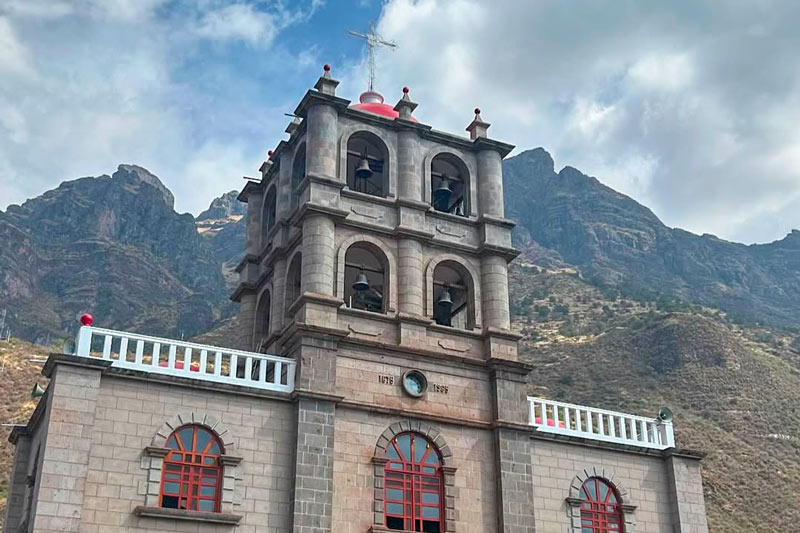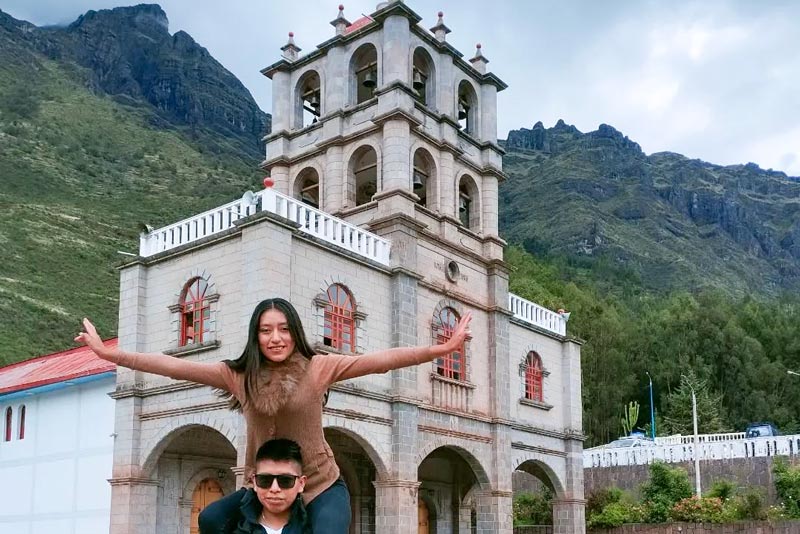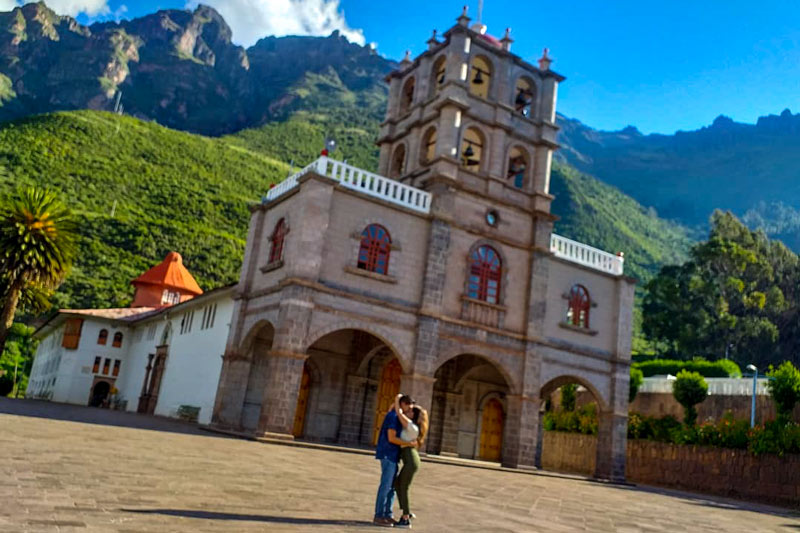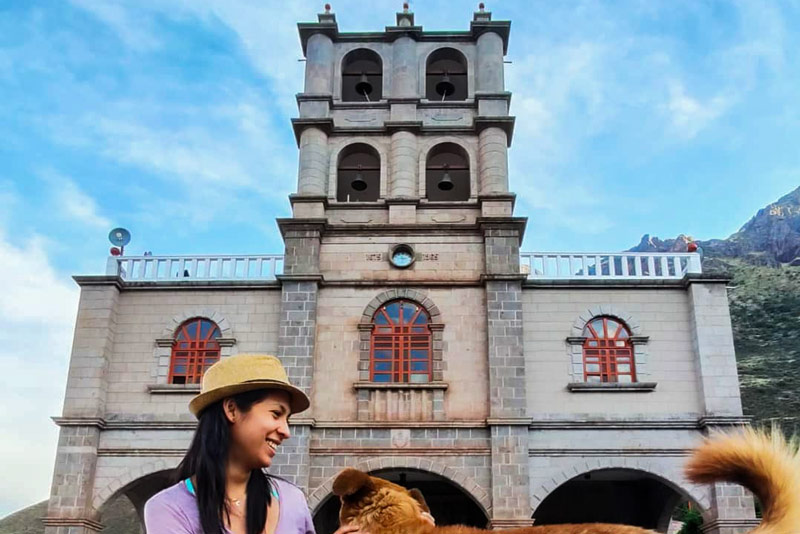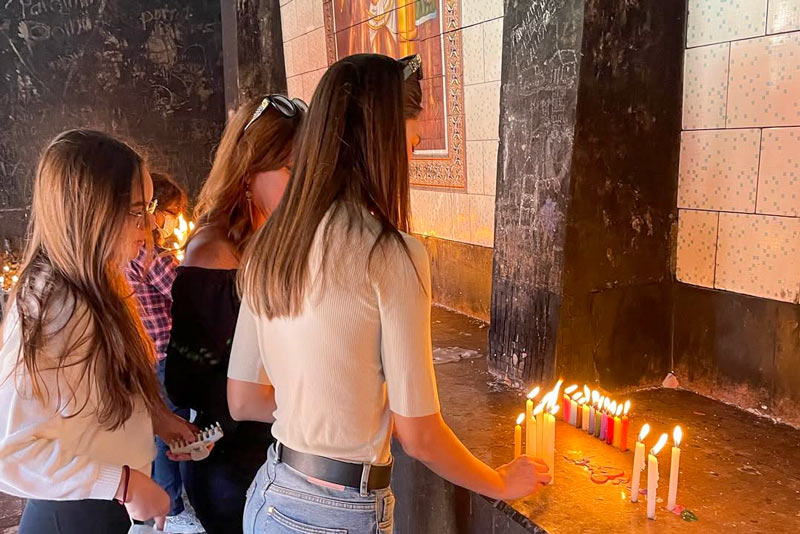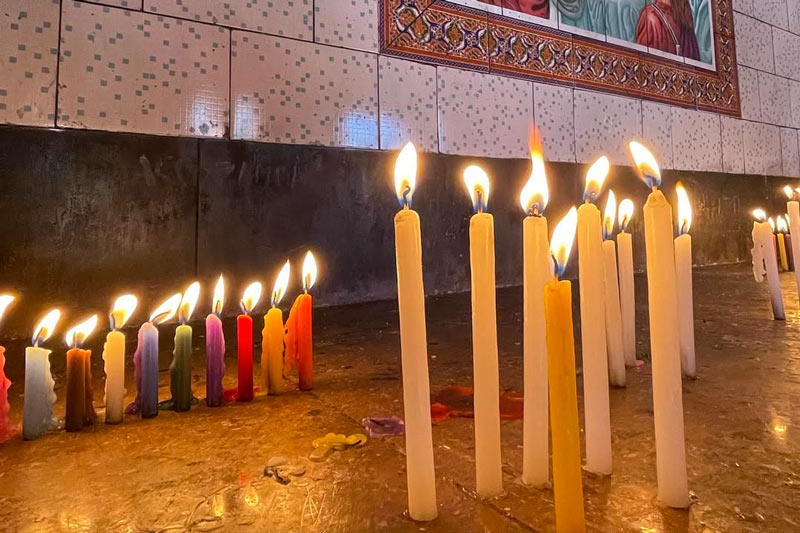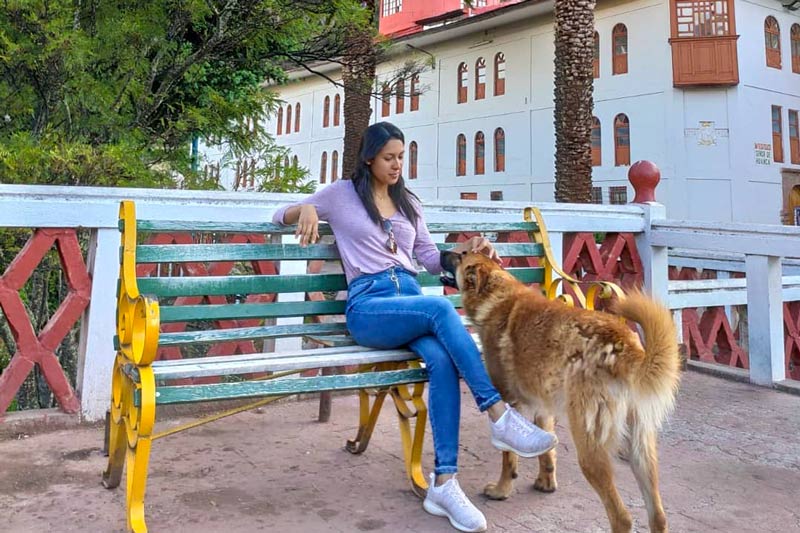Sanctuary of the Lord of Huanca in Cusco
Enjoy the tour to the sanctuary of the Lord of Huanca during your visit to Cusco. This is located in the community of Huanca, in the Cusco region. It is a place known for its religious significance and the natural beauty that surrounds it. Thousands of devotees consider it an essential point in their visit to religious circuits, being an epicenter of pilgrimage and devotion where people seek spiritual healing, peace and miracles. Learn more about this sanctuary to plan it on your next visit to Cusco.
- What will I find on my visit to the Sanctuary of the Lord of Huanca?
- Where is the Sanctuary of the Lord of Huanca?
- How to get to the Sanctuary of the Lord of Huanca?
- Characteristics of the Sanctuary of the Lord of Huanca
- Importance of the Sanctuary of the Lord of Huanca
- What other places should I visit during my visit to the Sanctuary of the Lord of Huanca?
- Most popular churches in Cusco
- Image gallery: Sanctuary of the Lord of Huanca
- Recommendations
- Frequently Asked Questions
What will I find on my visit to the Sanctuary of the Lord of Huanca?
On your visit to the Sanctuary of the Lord of Huanca, you will find a place full of spirituality, history and tradition.
The Main Sanctuary
- Church: A beautiful church where the image of the Lord of Huanca is venerated, surrounded by an atmosphere of peace and contemplation.
- Chapels: Secondary spaces for prayer, where visitors light candles and make requests or thanks.
Miraculous Stone
- This place has a stone on which, according to tradition, the Lord of Huanca left his footprint as a sign of protection. Many pilgrims touch it to ask for blessings.
Pilgrimage Routes
- Trails used by devotees to reach the site on foot from Cusco or other nearby towns, especially during the central festival in September.
Holy Water Fountains
- The sanctuary has springs considered miraculous, where visitors collect water to take home or to purify their spirits.
Natural Environment
- The sanctuary is surrounded by an impressive natural environment, with mountains and a peaceful atmosphere that invites reflection and contact with nature.
Markets and Crafts
- Outside the sanctuary you will find stalls selling religious souvenirs, handicrafts and local products, such as rosaries, images of the Lord of Huanca and candles.
Rest Areas
- Spaces for visitors to rest and enjoy the view while sharing food.
Where is the Sanctuary of the Lord of Huanca?
The Sanctuary of the Lord of Huanca is located in the community of Huanca, in the district of San Salvador, province of Calca, in the Cusco region. It is located approximately 50 kilometers from the city of Cusco, at an altitude of 3,100 meters above sea level, in a mountainous environment surrounded by nature.
In addition to being a spiritual experience, the hike to the Sanctuary of the Lord of Huanca is an excellent opportunity to practice sports and connect with nature. This tour, which lasts approximately 6 to 8 hours from Cusco, offers a moderate physical challenge ideal for those who enjoy hiking. As you advance, you will be able to appreciate impressive Andean landscapes. By combining physical activity with spirituality, this pilgrimage becomes a comprehensive experience that not only strengthens faith, but also health and well-being.
How to get to the Sanctuary of the Lord of Huanca?
Getting to the Sanctuary of the Lord of Huanca is an experience that combines spirituality, nature and culture. There are several ways to get there, depending on your preferences and the level of demand you want to have.
By Public Transport
- From Cusco you can take a collective or a bus to the district of San Salvador.
- Once in San Salvador, you can take a taxi or walk approximately 2 kilometers to the sanctuary.
By Private Vehicle
- From Cusco, take the road to San Salvador, passing through places like Oropesa and Huasao, the town of the witch doctors of Cusco .
- The drive takes about 1 hour and a half.
- There are parking lots near the sanctuary for visitors.
On foot (walk)
- A popular option among the faithful and hiking lovers, especially during the September 14th holiday, when they do it from Cusco.
- The main route begins in the district of San Jerónimo and follows rural roads with mountainous landscapes to the sanctuary.
- The tour takes between 6 and 8 hours, depending on the pace and the stops you make.
Characteristics of the Sanctuary of the Lord of Huanca
| Aspect | Feature |
|---|---|
| Location | Huanca community, San Salvador district, Calca province, in the Cusco region. |
| Altitude | Approximately 3,100 meters above sea level. |
| Distance from Cusco | About 50 kilometers from the city of Cusco. |
| Climate | Moderate cold with temperatures varying between 5°C and 18°C. |
| Landscape | Green mountains, agricultural fields and green paths surround the sanctuary. |
| Access | Asphalt road to San Salvador and 2km rural road to the sanctuary. |
| Flora and Fauna | Typical Andean vegetation such as ichu and native trees such as Queuña. Fauna includes birds and small mammals. |
| Visitor demographics | Thousands of pilgrim visitors and hiking enthusiasts. |
| Cultural importance | A center of Catholic devotion and Andean syncretism, it is considered a place of spiritual and physical healing. |
If you visit the Sanctuary of the Lord of Huanca, take the opportunity to enjoy the hike that offers incredible views of the Sacred Valley and a unique connection with nature. Complement your experience by exploring nearby places such as the Huacarpay Lagoon and Piquillacta, combining spirituality, history and spectacular landscapes.
Importance of the Sanctuary of the Lord of Huanca
The Sanctuary of the Lord of Huanca is a place of great spiritual, cultural and social importance, both for the inhabitants of the Cusco region and for thousands of pilgrims who visit it every year. Its relevance can be summarized in the following points:
Center for Spiritual Devotion
- It is considered a sacred place where the faithful come to seek comfort and spiritual healing.
- The figure of the Lord of Huanca is seen as a symbol of protection and miracles, attracting pilgrims from all over Peru and abroad.
Cultural and Religious Syncretism
- The sanctuary represents the fusion between the Christian traditions brought by the Spanish and Andean beliefs.
Tourist and economic importance
- It is an important religious tourist destination in the Cusco region, especially during the September 14th holiday.
- Generates income for local communities through transportation services, sales of crafts and food.
Meeting Point and Community
- The pilgrimage to the sanctuary fosters unity among devotees, strengthening cultural identity and solidarity among attendees.
- It is a space to share traditions, stories and spiritual experiences.
Space for Peace and Reflection
- Its location in the middle of a natural environment allows visitors to disconnect from everyday life and be at peace with their faith and nature.
What other places should I visit during my visit to the Sanctuary of the Lord of Huanca?
San Salvador
- This small district is ideal for getting to know Andean rural life, full of local traditions and customs.
- You can try the typical cuisine of the region.
Pisac
- Located less than 40 kilometers from the sanctuary, the town of Pisac is known for its impressive archaeological ruins and its famous craft market.
- A visit to its archaeological center and its Inca temples will complement your cultural experience.
Sacred Valley of the Incas
- Explore the Sacred Valley (The Sacred Valley of the Incas: Complete Information), where you will find other important destinations such as Urubamba, Ollantaytambo and Chinchero, each with its own historical and cultural wealth.
Huacarpay Lagoon
- This lagoon is perfect for those looking to watch birds, enjoy the scenery and relax surrounded by nature.
Piquillacta Archaeological Complex
- Piquillacta, a pre-Inca city in the south valley of Cusco, is located on the way to the city and has impressive urban planning that includes temples, plazas and canals from the Wari culture.
Most popular churches in Cusco
Cusco, with its rich colonial history and deep connection to Catholicism, is home to several churches of great religious and architectural importance. Some of the most popular and emblematic are:
1. The Cathedral of Cusco
- Location: Plaza de Armas, Cusco.
- Description: Considered the most important church in Cusco, the Cathedral is a jewel of Baroque and Renaissance art. Its construction began in 1559 on the site of an ancient Inca temple. It houses a valuable collection of colonial art.
2. Church of the Society of Jesus
- Location: Plaza de Armas, Cusco.
- Description: This baroque church was built by the Jesuits in the 17th century. It is notable for its ornate façade and impressive main altar, and is one of the most beautiful in the city. It is renowned for its architectural design and artistic details.
3. Church of San Blas
- Location: San Blas neighborhood in Cusco .
- Description: This church is known for its beautiful altar carved from cedar wood, made by Cusco artisans. San Blas is the patron saint of artisans, so the church has a particular symbolism for the inhabitants of the neighborhood.
4. Church of Andahuaylillas
- Location: Andahuaylillas, 30 km from Cusco.
- Description: Nicknamed the “Sistine Chapel of America,” this church is famous for its impressive interior and artistic wealth. It is an important stop in the Southern Valley of Cusco and one of the best examples of colonial architecture in the region.
5. Church of Santo Domingo (Qorikancha)
- Location: Santo Domingo Square, Cusco.
- Description: The church is built on the site of the ancient Inca temple of Qorikancha. It is a fascinating site that shows the fusion of Inca and colonial architecture.
6. Church of San Francisco
- Location: Plaza San Francisco, Cusco.
- Description: One of the oldest churches in Cusco, built in the 16th century. Its architecture is beautiful, and it also stands out for its historical and spiritual value.
Recommendations
- Plan your trip in advance and choose the best route to get there.
- Wear comfortable, warm clothing and sturdy footwear for rough terrain.
- Bring water and light snacks to stay hydrated and energized.
- Respect the area by maintaining appropriate behavior and avoiding excessive noise.
- Participate in rituals or ceremonies if you feel comfortable, such as mass or blessing.
- Enjoy the natural environment to reflect and find tranquility.
- Support local merchants by purchasing crafts or local products.
- Explore other nearby places such as the San Salvador district or the Valle Sur.
Frequently Asked Questions
1) Where is the Sanctuary of the Lord of Huanca located?
The sanctuary is located in the district of San Salvador, province of Calca, about 50 km from the city of Cusco.
2) How to get to the sanctuary from Cusco?
You can take public transport or a taxi from Cusco to the district of San Salvador. From there, you can continue by vehicle or on foot to the sanctuary.
3) Is it possible to hike to the sanctuary? How long does it take?
Yes, many people choose to hike from Cusco or San Salvador. The hike from Cusco can take approximately 7 hours, depending on the pace.
4) How much does the entrance to the sanctuary cost?
Admission is free, but voluntary contributions are accepted for the maintenance of the site.
5) Are there accommodations near the sanctuary?
Yes, there are small lodgings and guest houses nearby that offer basic accommodation. You can also find options in the San Salvador district.
6) Is the hike suitable for children or elderly people?
Yes, but caution is advised on the hike as the terrain can be uneven. For elderly people or those with limited mobility, it is preferable to arrive by vehicle.
7) What is the weather like in the area and what type of clothing is recommended to wear?
The weather is cool, especially in the early morning and at night. It is recommended to wear warm and comfortable clothing, as well as sturdy walking shoes.
8) Is it allowed to take photographs inside the sanctuary?
Yes, but respect is requested for the prayer areas and the people who are in moments of reflection.
9) When is the Lord of Huanca festival celebrated and what activities does it include?
The main festival is celebrated on September 14 with masses, processions, fairs and cultural activities, attracting thousands of pilgrims.
Advice from people who have been there
 By: Favio V.
By: Favio V.“Spirituality and nature in harmony“
“My visit to the Sanctuary of the Lord of Huanca was unforgettable. The tranquility of the place, surrounded by mountains, creates a magical atmosphere. In addition, the walk to reach the sanctuary was an enriching experience, with spectacular landscapes that I enjoyed with my family.“
By Ticket Machu Picchu – Last updated, January 28, 2025
